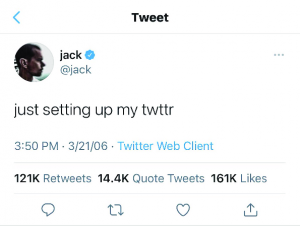We’ve all seen those pixelated pictures of NFTs — images that seemed like nothing special at first glance. In those times, almost nobody could have imagined they would skyrocket in value, captivating the digital art world and beyond? “CryptoPunk #3100,” for instance, is one of the first popular NFTs, which was created by Larva Labs in 2017. Its concise yet unique 24×24 pixel art image of an alien was sold for $16 millions, driving the immense hype around NFTs.

Now, the NFT craze has digital artworks, music, virtual real estate, and even tweets being sold for prices that go through the ceiling. The growing engagement has skyrocketed the market value of NFTs and created a new ecosystem for digital ownership and creativity.
Nevertheless, the security risks associated with NFTs progress in parallel with the NFT market. It’s essential to liquidate safety-related risks to put the interests of all parties involved first in the NFT space.
Let’s explore the security risks associated with the NFT craze, discuss their impact on investors and artists, and provide best practices for securing NFTs. In particular, we’ll delve into the role of Virtual Private Networks (VPNs) in boosting NFT security and look at future developments in this dynamic sector.
Understanding NFTs and Their Appeal
NFTs operate based on blockchain technology, providing the origin and ownership of digital assets. Each NFT is stored on a blockchain and linked to a specific asset, be it art, music, or virtual real estate. The blockchain ensures a transparent and immutable record, so it becomes almost impossible to fake ownership or modify the asset’s history.
NFTs have become a true breakthrough in the digital market, with the user base projected to reach 19.71 million by 2028. User penetration is forecasted to be 0.23% in 2024 and to rise to 0.26% by 2028, as Statista states.
The value of NFTs is based on their outstandingness and the potential for significant returns on investment. You’ve probably heard about Beeple’s digital artwork “Everydays: The First 5000 Days,” which sold for $69 million, and Jack Dorsey’s first tweet, which was auctioned for $2.9 million. These high-profile sales highlight the lucrative nature of NFTs and their growing market value.

The democratization of art and content creation allows artists to monetize their work pretty straightforwardly. The scarcity and uniqueness of NFTs create a sense of exclusivity and value. Besides, the integration of NFTs with virtual worlds and games opens up new opportunities for digital interaction and commerce.

Security Risks Associated with NFTs
A recent survey reveals that over $100 million worth of NFTs have been stolen since July 2021. This sharpens the security issues associated with NFTs. Let’s go through the key cybersecurity threats happening within NFT.
Phishing Attacks
Phishing attacks are a prevalent threat in the NFT community, targeting unsuspecting users to steal their assets or personal details. Attackers basically impersonate legitimate NFT platforms or use fake links to decepting users into showing their private keys or login credentials. In fact, there have been instances where fake NFT marketplaces or support emails resulted in the theft of valuable NFTs.
Malware and Ransomware
Malware is another considerable risk to NFT transactions and storage. Malicious actors can use malware to gain unauthorized access to digital wallets, disturbing the security of NFTs. What’s more, ransomware attacks on NFT platforms can disrupt services and lock users out of their accounts, demanding payment to restore access. Such attacks can lead to substantial financial losses and destroy user trust in the NFT ecosystem.
Smart Contract Vulnerabilities
Smart contracts are self-executing contracts with the terms directly implemented into code. They enable seamless NFT transactions, but, on the other hand, introduce risks. Vulnerabilities in smart contract code can be exploited by attackers to drain funds or manipulate transactions. For example, the infamous DAO hack in 2016 exploited a vulnerability in a smart contract, resulting in the loss of $50 million worth of Ethereum. Similar exploits can occur in NFT contracts, leading to significant financial damage.
Fake Marketplaces and Scams
Besides, fake NFT marketplaces are another way to trick users. Scammers create counterfeit platforms that fully copy legitimate ones to deceive buyers into purchasing fake or non-existent NFTs. Such scams often imply convincing websites, fraudulent auctions, and counterfeit artwork. Victims of such scams lose their money and contribute to the decrease of confidence in the NFT market in parallel.
Identity Theft
When insufficiently protected, NFT transactions can introduce users’ identity theft. Attackers can retrieve personal information during transactions or use social engineering tactics to gain access to sensitive data. This data can then be used to impersonate victims, make unauthorized transactions, or even carry out further attacks. Protecting personal data is critical to prevent identity theft in the NFT space.
Impact on Investors and Artists
Security breaches in the NFT market have drastic consequences for all engaged parties, affecting both investors and artists. Investors can suffer significant financial losses if their NFTs are stolen or if they fall victim to scams. Therefore, investors can be wary of engaging in future transactions within the NFT ecosystem.
For artists, security breaches can damage their reputation and revenue. If an artist’s NFTs are stolen or copied to make a fake one, it eliminates the value of their work and can lead to loss of earnings. Besides, artists may have to deal with legal and financial issues in recovering stolen assets or coping with fraudulent sales.
The broader implications for the NFT market cover decreased trust and slower adoption rates. Security concerns can deter new users from entering the space and discourage existing participants from engaging in further operations. Such risks should essentially be eliminated to maintain the growth and credibility of the NFT market.
Best Practices for Securing NFTs
How to handle the safety-related challenges and secure your NFT assets? Let us walk you through some tried-and-true tips:
Using Reputable Marketplaces
The primary way to secure NFT is to use established and reputable marketplaces. You should visit trusted platforms like OpenSea, Rarible, and Foundation that introduce solid security measures and a vetted user base, minimizing the risk of scams and fraudulent activity. As a conscious user, you should ensure the marketplace’s legitimacy before making any transactions. This way, you are guaranteed to prevent many common security issues.
Implementing Strong Authentication Methods
You should also essentially create strong authentication methods that directly raise the safety of your NFT accounts. Adopt two-factor authentication (2FA) or multi-factor authentication (MFA) methods to elevate the security even more, and reduce the potential of malicious actors to obtain unauthorized access. What’s more, it’s a standard practice to create strong, unique passwords for NFT platforms, and eliminating the reuse of passwords across different services can further enhance security.
Regular Software and Firmware Updates
Keep wallets and related software up to date to have the latest and most robust security level implemented. Software updates often cover patches for known vulnerabilities, saving from possible exploits. Users should regularly check for updates and guarantee that both their wallet software and any connected devices are running the latest versions. Within this practice, you can maintain the integrity of assets, keeping transactions and storage of NFT secure.
Educating Yourself and Staying Informed
Ongoing education on NFT security and awareness can help you stay ahead of arising threats. Resources such as online courses, webinars, and security blogs can deliver valuable insights into best practices and new developments. You should keep up with the latest scams, phishing tactics, and security vulnerabilities to be able to recognize and avoid potential threats.
Secure Wallet Practices
Opt for the right type of wallet and employ secure practices to boost your NFT security. Hardware wallets, such as Ledger or Trezor, provide high levels of security by keeping private keys offline. Software wallets can also be secure if employed correctly, with strong passwords and 2FA. Paper wallets, which straightforwardly mean storing private keys on a physical document, equip you with another layer of security. Users should back up their wallets and private keys securely, which eliminates digital storage that can be hacked.
Role of a VPN in Enhancing NFT Security
A VPN (Virtual Private Network) is a robust tool that can skyrocket NFT security by encrypting internet connections, consequently protecting user data and transactions from potential cyber threats. Using a VPN, you are able to ensure that sensitive information related to NFT purchases and transfers remains confidential and less susceptible to hacking or extraction.
Protection Against Phishing and Malware
VPNs can mitigate phishing attacks by blocking access to malicious websites and preventing attackers from intercepting data. Some VPN services offer built-in malware protection, scanning downloads and websites for threats. By using a VPN, NFT enthusiasts can reduce the risk of becoming victims of phishing scams and malware infections.
Secure and Private Transactions
VPNs provide enhanced security for NFT transactions, so that data transmitted between the user and the marketplace remains encrypted. Cipher prevents leaks and data interception, so your sensitive information, such as private keys and transaction details, is in safe hands. Using the best VPN for NFT during transactions guarantees privacy and reduces the risk of unauthorized access.
Bypassing Geo-Restrictions and Censorship
The best NFT VPN can allow you to handle geo-restrictions and censorship, delivering uninterrupted access to NFT platforms from any location. You are welcome to connect to the broad range of servers in different regions and access marketplaces that may be restricted in their region. This capability is particularly useful for NFT enthusiasts in regions with strict internet regulations, allowing them to participate in the global NFT market securely.
Best VPN Practices for NFT Enthusiasts
Choose a reliable and secure NFT VPN provider – this is the best strategy for optimal security. Users should order VPN services with strong encryption, a no-logs policy, and additional security features such as kill switches and DNS leak protection. Moreover, you should modify VPN settings for maximum security and regularly update the VPN software to further enhance protection. Combine the VPN use with other security measures, such as strong passwords and 2FA to achieve comprehensive security for NFT transactions.

The Merge – $91 800 000
Artist: Pak
Future Outlook and Developments in NFT Security
There are some booming technologies that hold the potential to enhance NFT security significantly. Blockchain is one of them. Directly related to security, it ensures more advanced cryptographic algorithms and decentralized identity solutions that can mitigate existing risks. Ethereum, which is currently the most widely used and popular blockchain for NFT marketplace development, is used along with Binance Smart Chain, Cardano, Tezos, WAX, Flow, and Solana. Besides, improvements in smart contract auditing and formal verification methods can help prevent vulnerabilities and exploits.
Predictions for future security trends in the NFT space cover increased adoption of decentralized security solutions and solid focus on user education. Within the NFT market maturing, we can expect more robust industry standards and regulations to emerge, promoting best practices and ensuring a safer environment for all participants.
The role of regulation and industry standards will continue to prevail in improving security. Clear guidelines and enforcement mechanisms are aimed at fraud prevention, investor safety, and higher trust in the NFT market. Collaborative engagement between industry stakeholders, regulators, and security experts is key to building a secure and resilient NFT ecosystem.
Conclusion
The NFT craze has extended the opportunities for digital ownership, creativity, and investment. Still, it has also brought in substantial security risks that must be handled to ensure the long-term sustainability of the market. As a user, you should be acquainted with the described threats, implement best practices, and leverage tools such as VPNs, users can protect their NFTs and participate in the market with confidence.
All in all, the significance of security in the NFT ecosystem should be prioritized for any all engaged parties. The NFT market continues to grow and enhance, and in case you would like to dive into it, you should solidly safeguard assets and sensitive details. NFT VPN can serve as your devoted assistant to protecting your assets with robust security measures.
Protect your valuable NFTs with the best VPN on the market to ensure your assets are secure from cyber threats. Don’t leave your collection vulnerable; subscribe to the reliable ZoogVPN service today and keep your NFT secure!



























